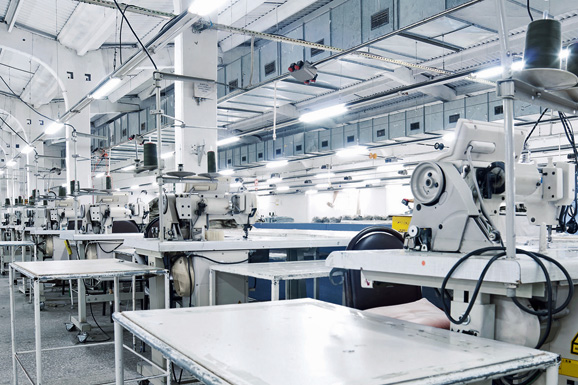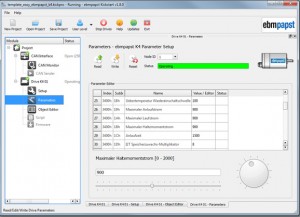High efficiency is only possible when all components are perfectly matched. This is especially true for the right selection and design of drives. However, development is subject to constraints in both costs and scheduling. Successful drives will be those that are based on a comprehensive modular system. Now a motor with integrated control electronics adds to the range of options among drives with a diameter of 63 mm. In addition to the mechanics, now the regulation via interfaces can be easily customised to suit local conditions.
For complex systems with many drives or special measuring instruments with high standards for control, modern technology depends on drives that can be very finely calibrated. To offer users a truly universal drive solution, ebm-papst St. Georgen is now equipping its proven ECI-63 motors with integrated control electronics (Fig. 1). The so-called K4 design with expanded basic configuration is being added to the set of modules to enable especially flexible drive applications.
Benefits of modularity
Customisation is a fine thing, but costly in comparison with standard products. Mass production is considerably more economical but loses out on efficiency due to lack of flexibility. With a modular solution, users benefit from the economical mass production of the individual modules while being able to use drives customised according to their specifications. Now the ECI family adds another level of customisation for the 63 mm motors. In addition to the established modules for gearboxes, brakes, encoders, etc., now motor modules with fully integrated control electronics are available (Fig. 2).
Figure 2: Find the ideal drive for practically any application by combining modules as needed
Depending on the desired power, these compact motors are available in versions with stator lengths of 20, 40 and 60 mm. Depending on the design, they deliver between 150 and 400 W to the drive shaft at an efficiency of around 90 % with outstanding overload capacity. The integrated K4 control electronics provide sinusoidal commutation allowing the motor’s full potential to be utilised with field-oriented regulation down to standstill, as well as a speed and torque controller. The smooth sinusoidal current rise prevents commutation noise; the motor runs very quietly and vibration-free, thanks also to its maintenance-free ball bearings.
Several digital and analogue interfaces provide for external communication. The electronics parameters can be easily adjusted after installation via the RS485 interface for adaptation to changing situations at the customer. The clear “Kickstart” user interface helps the user set parameters and select the operating mode (speed, positioning or torque mode) for quick adaptation to the required application.
Protective functions built into the electronics allow full utilisation of the drive’s performance without adversely affecting its service life or reliability.
The dynamic EC motor can be easily combined with the proven planetary and angular gears and crown gearheads from ebm-papst ZEITLAUF, as befits the modular approach. These efficient gearboxes cover a wide reduction range from 6.7 to 33.3:1 for angular designs and 3.2 to 30:1 for the planetary designs.
Compact, customised drives are suitable for all applications in industrial drive engineering, particularly for automation, medical technology, in-house logistics, packaging, access control and battery-powered applications. With adjustable torque limitation, drives for winders and bobbins in the textile industry, or precision performance requirements for laboratory applications, are also no problem.
Sinusoidal commutation, extremely precise and quiet
The pulse-width modulation often used for regulation in large motors can cause irregularities and speed variations in small drives, especially at low speeds. This is due to the rotor’s lower inertia. If a sinusoidal signal with three analogue sine waves is used for regulation instead, then smooth operation is ensured even at low speeds and with small moments of inertia. The rotor can follow the smooth, sinusoidal current flow without acceleration or cogging torques.
Conventional pulse or block commutation leads to additional radial and tangential forces. Especially with square-wave currents, localised perpendicular forces arise which can lead to abrupt vibrations in the stator. The resulting “commutation noise” is not to be neglected. The only solution is control electronics like the K4 with sinusoidal current flow. The sinusoidal regulation largely or completely removes the commutation component of the operating noise for smooth, vibration-free operation from standstill through the entire speed range.







Leave a comment